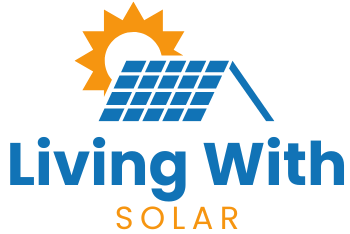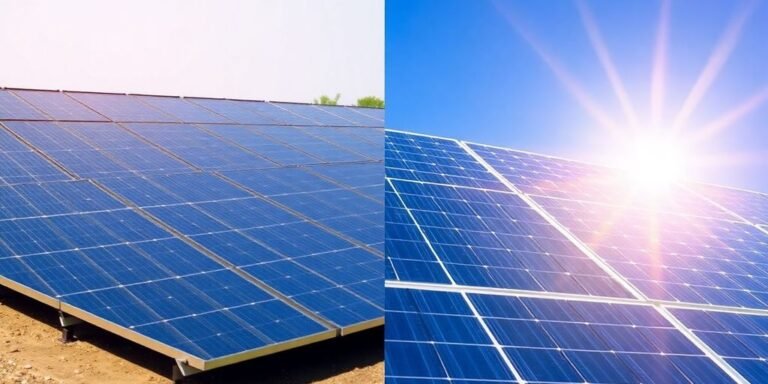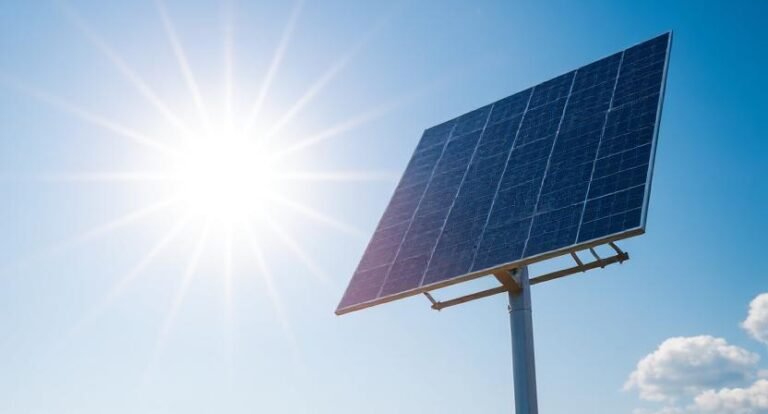Choosing the right solar panels for my home requires evaluating several factors. I look for technology that converts sunlight efficiently, like monocrystalline or polycrystalline panels.
Efficiency ratings and the inverter’s role in converting DC to AC also matter.
I pay attention to warranties from reputable brands, ensuring they last 25-30 years. My roof’s orientation and condition play a big role, too.
If I keep exploring, I can uncover additional tips to optimize my solar choice.
🌞 Power Your Home with Solar – See How →
Key Takeaways
- Assess your roof characteristics, including orientation and pitch, to determine solar panel efficiency potential.
- Choose between monocrystalline and polycrystalline panels based on your budget and space availability.
- Evaluate the efficiency ratings and temperature coefficients to ensure optimal performance in your local climate.
- Look for panels with strong warranties (25-30 years) from reputable brands for long-term reliability.
- Consider the total installation costs, including panel type, efficiency, and local incentives, to maximize your investment.
Understanding Solar Panel Technology
When it comes to harnessing solar energy, understanding solar panel technology is essential. Solar panels use photovoltaic cells to convert sunlight into electricity, producing DC that an inverter changes to AC for home use.
I’ve learned that monocrystalline panels are more efficient, boasting an efficiency of 19.78% to 22.7%, while polycrystalline panels are cheaper but less efficient, requiring more space.
Installation costs average about $3.03 per watt, influenced by panel type and efficiency.
Significantly, panels come with a warranty lasting 25 years, ensuring they maintain 84% to 92% capacity, which gives me peace of mind for my solar energy system.
Evaluating Panel Efficiency and Output
Understanding the different types of solar panels sets the stage for evaluating their efficiency and output.
Panel efficiency is essential—higher efficiency panels, like Maxeon, convert more sunlight into electricity, maximizing energy production in limited space.
The output rating of solar panels typically ranges from 250 to 400 watts, so consider options like Canadian Solar’s TOPHiKu6, which offers 450 watts.
Temperature coefficients also matter; Panasonic Evervolt performs well in heat, minimizing efficiency loss.
Finally, look at warranty length—25-30 years is ideal for ensuring sustained performance and energy output in your solar panel system while keeping installation costs manageable.
Comparing Solar Panel Types
Solar panels come in several types, each with its unique advantages and drawbacks. Here’s a quick comparison:
- Monocrystalline panels offer high efficiency (19.78-22.7%) and require less installation space but come with higher upfront costs.
- Polycrystalline panels are more affordable but have lower efficiency (15-20%), needing more space for the same energy production.
- Bifacial panels capture sunlight on both sides, boosting energy production, especially with reflective surfaces.
- Consider efficiency ratings and temperature coefficients to guarantee performance in your climate. Choosing between these solar panel types will impact your overall system effectiveness and performance warranty.
Importance of Warranty and Brand Reputation
Choosing the right solar panels isn’t just about efficiency and cost; it also hinges on warranty and brand reputation.
A solid warranty protects your investment, often ranging from 25 to 30 years. Top-tier solar brands like Maxeon and REC offer extensive performance warranties, reflecting the manufacturer’s confidence in their high-quality products.
These warranties guarantee a certain output percentage over time, giving you peace of mind. By evaluating customer reviews and industry certifications, you can gauge brand reputation and reliability.
Remember, choosing a reputable brand with a strong warranty can lead to greater satisfaction and performance in the long run.
Assessing Home and Roof Characteristics
When I’m thinking about solar panels, I first check my roof’s orientation since a south-facing roof gets the most sunlight.
I also assess the available space because the number of panels I can install depends on how much room I have. These factors are essential for ensuring I get the most out of my solar investment.
Roof Orientation Importance
The orientation of your roof can make a significant difference in the efficiency of your solar panels. For ideal energy production, consider these factors:
- Roof Orientation: A south-facing roof maximizes sunlight exposure throughout the day.
- Roof Pitch: Aim for a slope between 15 and 40 degrees to enhance solar panel performance.
- Shading: Make sure there’s no shading from trees or buildings; this is vital for energy generation.
- Local Climate: Areas with more sunlight hours yield better solar performance, so assess your roof’s condition and verify it’s structurally sound for installation.
Space Availability Assessment
After considering roof orientation, it’s time to assess the space available for solar panels. I first evaluate my roof characteristics, measuring its size to determine how many panels can fit.
Standard 60-cell panels are about 65 by 39 inches, while larger 72-cell panels measure 77 by 39 inches. Next, I inspect for any shading from trees or buildings, as this can impact solar energy production.
Additionally, I consider the roof’s pitch; ideally, it should slope between 15 to 40 degrees for peak solar panel installation.
Finally, reviewing my household energy needs helps guide the number of panels required for efficiency.
Financial Considerations and Incentives
Investing in solar panels can initially seem intimidating, especially with an average cost of about $21,816 for a 7.2 kW system in 2025. However, understanding financial considerations and available incentives can ease the burden. Here are a few ways to save:
- Take advantage of the federal solar tax credit, which covers 30% of your installation cost.
- Explore local rebates that vary by location.
- Consider net metering to earn credits for excess energy.
- Weigh cash purchases against solar loans, as upfront payments usually yield the best savings without interest.
Frequently Asked Questions
How Do I Choose Solar Panels for My Home?
When I choose solar panels for my home, I assess my electricity needs, consider my roof’s characteristics, compare efficiency ratings, review warranties, and balance my budget. It’s all about maximizing energy output and long-term savings.
What Is the 20% Rule for Solar Panels?
Think of solar panels as a financial lifebuoy. The 20% rule suggests aiming to offset 20% of your electricity usage with solar energy. It’s a smart way to save money and promote sustainability in your home.
How Do I Know Which Solar Panels to Buy?
When I’m figuring out which solar panels to buy, I assess my energy needs, compare efficiency ratings, check warranties, and research brands. It’s essential to find a balance between performance and cost for long-term satisfaction.
What Do I Wish I Knew Before Buying Solar Panels?
They say, “knowledge is power.” I wish I’d known to assess my energy needs first. Understanding panel types and financing options would’ve saved me money and maximized efficiency. Researching warranties was equally essential for long-term peace of mind.





